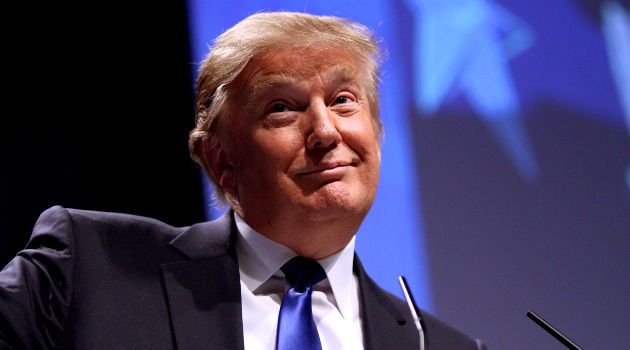There’s endless “spin” in over-politicized and self-serving Washington, with Democrats and Republicans both trying to convince people why any particular bit of economic data is either wonderful news or horrible news.
Since I care about policy rather than politics, I like to think I’m largely immune from this tendency. I criticize either Republicans or Democrats when they do something wrong, and I also offer praise when either Republicans or Democrats do something right.
That applies to Trump, of course.
For instance, the Department of Labor just released new numbers on the job market and Trump loyalists are bragging that this is additional confirmation that the president has steered the economy into glorious prosperity after the supposed wretched misery of the Obama years.
Is that true?
Well, here’s a chart showing total employment in the United States, taken directly from the Bureau of Labor Statistics. We see that jobs have been increasing, but can anybody identify a change in the trend line when Trump took office in January 2017?
For what it’s worth, the average monthly increase in employment has actually been smaller under Trump than it was under Obama.
Though Brian Riedl of the Manhattan Institute correctly observes that it’s harder to get more jobs when the unemployment rate is low.
Counterpoint: Job creation is a lot easier when the unemployment rate is over 5% (towards the end of Obama), then when it is already below 4% (the past couple years).
Eventually, you run out of qualified, unemployed people to move into jobs. https://t.co/6aaEsRLh6l
— Brian Riedl (@Brian_Riedl) February 5, 2020
Now that we’ve looked at total employment, let’s examine the BLS numbers for the unemployment rate.
Yes, we see better numbers during the Trump years, but we’ve been getting better numbers ever since 2010.
Can anyone look at this data and make a compelling case that there was some big change starting in 2017?
Next we have the BLS chart showing the employment-population ratio, which measures the share of the adult population which is actually employed (a key factor since economic output is a function of the quantity and quality of both labor and capital).
Notice, once again, that there’s no obvious change in the trend line when Trump took over from Obama.
It’s not good news, by the way, that the employment-population ratio is still below where it was before the 2008 crisis.
Though it’s worth noting that the employment-population numbers look much better if they’re adjusted for demographic change.

But adjusting the numbers for demographic change doesn’t have any impact on the point I’m making today. Notice that there hasn’t been any obvious change in the trend since Trump got to the White House.
So why do I keep making the point that the trend hasn’t changed?
Because I want people to understand that policy matters, not partisan affiliation. And the bottom line is that the trend line hasn’t noticeably changed because Trump hasn’t noticeably changed the overall level of economic freedom compared to Obama.
Yes, Trump has moved policy in the right direction on some issues (taxes and regulation), but he’s also moved policy in the wrong direction on other issues (trade and spending). Simply stated, his bad policies are offsetting his good policies.
Obama moved policy in the wrong direction, of course, but that was largely during his first two years. There was a policy stalemate his final six years.
And in terms of overall economic liberty, the post-2010 policy stalemate under Obama produced similar scores to the zig-zag policy we’re getting under Trump. So we shouldn’t be surprised that the trend lines are so similar.
———
Image credit: Gage Skidmore | CC BY-SA 2.0.




